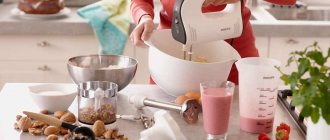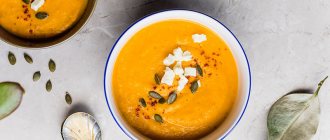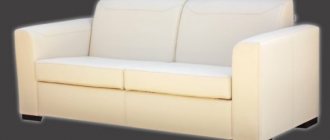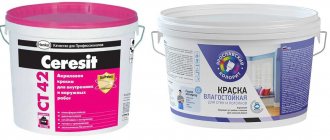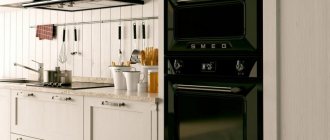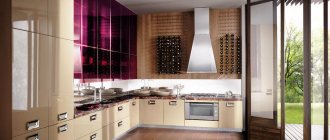Household appliances are needed in every kitchen. Combines, coffee grinders, multicookers, microwave ovens, ovens, dishwashers help do the job much faster and better. But the most popular is the blender. What is a blender? This is an electrical device designed for mixing solid and liquid ingredients. The capabilities of the blender are quite wide. This is a universal device; it can be used not only at home, but also for industrial purposes. In production they are used for mixing various powders and dry materials. In laboratories, a blender is used for research. What is a blender used for at home? For quick chopping, mixing, whipping various products. It helps turn solid ingredients into liquids and liquefies and emulsifies soft ingredients such as yogurt and fruits, resulting in a thick, smooth texture. It is not recommended to use it for slicing or grating foods; a food processor can handle these functions better. Using a blender in the kitchen allows housewives to save time and gives them the opportunity to be creative. With its help, dishes turn out much tastier. What can you cook with a blender?
There are many options:
- Various sauces.
- Puree soups.
- Cocktails, drinks, smoothies.
- Ice cream.
- Various types of creams.
- Salad dressings.
- Dough for pancakes and muffins.
Do people who follow a healthy lifestyle need a blender? Certainly. In minutes, whole vegetables, fruits, nuts and softer meats can create nutritious meals for any meal. The device is universal in use; it can be used to prepare savory snacks, frozen desserts, alcoholic drinks, and dressings. Some companies produce accessories for creating foam for drinks and dishes.
Main purpose of the device
Considering the fact that the blender is one of the oldest kitchen machines, appearing long before the creation of the mixer and food processor, its mixing and chopping functions can be called universal. Thanks to the system of rotating metal knives, the device copes perfectly with hot and cold dishes of liquid and solid consistency.
If you go in order, you can divide the preparation into the following categories:
- drinks - milk, fruit, vegetable or alcohol cocktails, smoothies with pieces of ice;
- mousses and pates - curd mixtures with vegetable additives, including nuts, as well as finely ground meat or fish;
- puree – any soups or main courses that can be ground into a paste;
- liquid dough or egg mixture.
The ability of a blender to turn any food into a soft diet consistency is necessary primarily for children, the elderly if they have dental problems, as well as dieters with diseases of the digestive tract.
Special blenders for preparing baby food have jars included
But the grinding process, which more clearly reveals the taste of products, will also be appreciated by completely healthy users. Sauces, pates and puree soups occupy a worthy place in expensive restaurants. Therefore, a home kitchen assistant will give you the opportunity to create small culinary masterpieces in your own kitchen.
The blender is also an absolute favorite among fans of healthy eating or vegetarians. They prepare healthy blends of plant-based ingredients, including nuts, daily.
Selecting the necessary nozzles
Blender attachments deserve special attention. The more attachments, the more capabilities the device has, but the more expensive the model. Therefore, before making your final choice, you should think about whether all the attachments will be useful.
Photo: unit.ru
Chopper with a lid. Suitable for slicing and shredding a variety of products, as well as for preparing fish or minced meat. Slicing attachment. Easily copes with cutting fruits or hard vegetables, cutting cabbage, thinly slicing mushrooms. Using it, it is convenient to chop onions - everything is done so quickly that there is no specific smell. Blender attachment. Used for making sauces and purees, excellent for making mayonnaise. Helps prepare pureed dishes for the baby from fruits and vegetables. Copes with chopping herbs and nuts, mixing cocktails. Whisk attachment. The blender is used as a mixer - it helps to knead dough, whip cream or egg whites, and is convenient in the process of preparing various desserts. Shredding attachment. Helps to chop and finely chop carrots, beets, apples, cabbage and hard cheeses. Vacuum system. Helps keep food fresh for a long time or marinate it quickly. Using a vacuum pump, air is pumped out of the container, resulting in a vacuum. To marinate kebabs, just pour the marinade over the meat placed in a container, close the lid, pump out the air - and after 30-40 minutes you can start cooking. A pump is an attachment that helps create a vacuum in special containers included in the kit. Containers can be purchased separately. You can put any food in them, close the lid tightly and use a pump to pump air out of the container, creating a vacuum space. Some containers have a calendar on the lid where you can mark the date the product is sealed. This allows you to control the degree of freshness of the product.
Blender functions
The basic functions of a blender are the following operations.
- Mix until smooth. The mode can work both for liquid components and for products with different densities. Thanks to several speeds of movement of the knives, you can adjust the density of the mixture, preserving small pieces, or completely dissolve them in the mass of other components.
- Slicing and chopping is the main function of knives, which can have 2 or 4 blades.
- Whipping is not the best quality function when working with knives; combined types of blenders often include a whisk attachment, performing the functions of a mixer.
- The ice crusher, which is present in advanced models, makes it possible to prepare high-quality smoothies or cold coffee drinks.
Powerful blender models can handle crushing ice
Advantages and disadvantages
Due to its design, an immersion blender has both advantages and disadvantages.
Pros:
- It is small in size, so the device can be stored in any kitchen;
- capable of preparing small portions, which is convenient for everyday use;
- can be used in any container;
- due to the addition of different attachments, it has wide functionality;
- The simple design is easy to operate and clean.
Minuses:
- due to its low power, it sometimes does not cope well with grinding solid products;
- It can be difficult to obtain a uniform consistency;
- When working, the device must be held in your hands, which may not be entirely convenient.
Some models of immersion blenders are cordless, which can be considered both a plus and a minus. The cordless model does not depend on the length of the cord, but the operating time of such a blender is very limited.
What can you grind in a blender?
The number of categories of products that can be crushed in a blender directly depends on the power of the device, as well as the attachments offered by the manufacturer in the kit. All models are capable of working with liquid drinks or soups, soft (boiled) vegetables, fruits, herbs and cottage cheese. Devices equipped with hardened knives and a strong motor easily grind nuts, coffee, and also crush ice. Some systems are capable of grinding meat, resulting in a fine minced consistency.
You can prepare minced meat in a blender
Noise level
The more powerful the motor and the higher the speed of the blender, the higher the noise level. Usually the maximum value is indicated in the specifications.
Dependence of noise level on blade rotation speed in Haier blenders
According to interstate sanitary rules and regulations (MSanPiN 001-96), the noise level of household appliances “for the mechanization of kitchen work (combines, coffee grinders, mixers)” should not exceed 85 dB(A). Most blenders meet these conditions.
Types of Blenders
To understand why a blender is needed, you need to find out what types there are. There are three main options for electrical appliances:
- stationary;
- submersible;
- combined.
Stationary
The stationary type is equipped with a stand on which is installed a bowl with a lid for food with a knife inside and an electric motor located inside the body (more about the internal design - the device of a stationary blender).
With this model you can:
- beat egg whites to make sweet pastries;
- prepare milkshakes and sauces;
- make a variety of purees, including for young children;
- mix ingredients;
- knead batter;
- crush ice
This type of blender has worked well for creating liquid mixtures, but grinding small amounts of food or herbs in it will be problematic.
When compared with an immersion blender, we can note several of its positive qualities, such as the absence of the need to hold the device in your hand during operation (it will do everything on its own), you don’t have to wash it, most often the device is equipped with a self-cleaning function, which will avoid contact with sharp knives . The principle of the function is to pour warm water into the container of the device and turn it on for a short time.
Submersible
The submersible high-speed type consists of one “leg” and a knife attachment. As a rule, the cutter system is covered with a metal or plastic “cap”, which prevents splashing during operation. The main advantage of this design is the ability to operate as a chopper inside any container. This could be a pot of soup or a bowl of dough.
The immersion blender can be used in conjunction with any container
Often with it you can find all kinds of additional attachments and bowls, allowing you to not only mix liquid products in a few seconds, but also make purees, chop herbs, nuts and vegetables. By quickly changing one attachment to another, secured with a lock on the motor part, you can beat eggs for further preparation of an omelet. This makes the device multifunctional. The only drawback, or most likely a feature of the device, is the need to hold the blender in your hand while it is working.
Many manufacturers of professional equipment offer premium blenders with a special design. Such models are made of stainless steel or shockproof polycarbonate, which makes them more durable than household appliances. They are equipped with increased power and a larger bowl.
Combined
Combined devices are similar to an inverted version of a classic blender, since a lid with a motor and knives is installed on a stationary container, which pulls the products upward, grinding them literally in the air. Such equipment can be equipped with whipping whisks/dough hook, have a function for vacuum preservation of the finished mixture, or removable glasses for one drink that you can take with you.
Combined models have a bowl and several attachments
Blenders included in food processors are a separate category.
History of the electrical appliance
In order to understand why a blender is needed, let’s dive into the history of the device. It will be clearer this way.
The blender appeared much earlier than almost all household appliances that many housewives have in their kitchens today. Before him, only meat grinders appeared. These are the ones that are screwed to the table, you start turning a huge handle, and you get minced meat. They appeared in the 19th century in America. And later they migrated to us. And only 25 years after them, in 1922, the first blender was born. Again in the United States of America.
Stephen Poplawski is considered the inventor of this device. He did not make it so that today we could grind food with it. He needed it to mix water, carbon dioxide crystals and syrup. Simply put, he wanted to use it to flavor soda fountain drinks. We know them as soda with syrup.
The first devices looked like a bowl on a special stand with a rotating propeller blade. And all they knew how to do was mix. Well, in principle, this is exactly what they were developed for.
And what is very interesting: they were immediately delighted not by the children, who could not live without sweets, but by the bartenders. And that's why. At that time there was Prohibition in America. But people wanted to drink. And this influenced the fact that in most establishments alcohol was sold in non-alcoholic cocktails. This was done to hide the sale of the forbidden drink from the police. Imagine what it’s like to constantly shake a shaker to mix a cocktail for each visitor. And all the visitors wanted a drink. This is precisely why the invention caused such joy among bartenders, who by that time had already managed to pump up their hands a little with shakers. They rushed to buy the invention with such excitement and zeal that they promoted it almost to the scale of a national idea.
But this is not the end of the story. 10 years after this, another American citizen, Fred Osius, refined Poplawski’s idea and became the creator of the stationary blender as we know it now. That is, he expanded the capabilities of the original invention, equipping it with special knives for chopping, chopping and pureeing products.
Further development of the unit continued in Switzerland. In the 50s of the last century, Roger Perinjac received a patent for a device that we call a hand or immersion blender. Then he called it “bamyx”. It is a combination of French words that mean whisking and mixing. Then he demonstrated it during an exhibition in Hannover. After that, it began to be used all over the world, using the immersion blender to chop, puree and grind a wide variety of foods.
He was immediately appreciated by professional chefs, and he appeared in each of them in the kitchen. Without it, modern dishes would definitely not be as interesting.
And then it was refined and improved, coming up with various attachments. And now we have a universal device that can replace almost any appliance in the kitchen.
Characteristics of equipment
When considering the parameters of the equipment, it is important to decide what blender you need in your kitchen, and only then make a choice:
- power;
- number of speeds;
- volume and material of the bowl;
- cleaning and care;
- nozzles;
- nutrition;
- price.
Power. With the help of high-power models, you can make any dish without much difficulty chopping raw vegetables, beating eggs, or preparing a milkshake containing crushed ice. The low-power type will do an excellent job with the above tasks; it is suitable for mixing boiled vegetables, fruits and creating cocktails.
Today, the number of speeds on the unit varies from 2 to 5, which makes the operation of the device controlled by the owner of the blender. The kitchen appliance can also be equipped with a turbo mode, which increases the operating speed to the maximum possible speed for a short time.
The volume of the bowl on modern devices varies from one and a half to 2 liters. This is enough to use the device to make a little more than one liter of milkshake. But just don’t forget that there is also such a thing as a useful volume, which is 200-300 ml less than that declared by the manufacturer.
The bowl material can be either plastic or glass. Obviously, glass containers are more durable, they do not get scratched when grinding hard products, such as cereals, nuts, coffee, do not absorb odors, and do not stain. But at the same time, glass makes the blender more vulnerable; if you drop it, the bowl may break. A plastic container loses its transparency over time.
Care. Many stationary models, as noted above, are equipped with a self-cleaning system, which allows you to wash the unit quickly and efficiently, and the likelihood of cutting yourself on the knives is minimized.
Nozzles Today, numerous modern models are equipped with additional attachments, such as whisks for beating eggs and dough, a measuring cup with knives for chopping, and an attachment for crushing ice, with the help of which the functions of the blender are expanded to the functionality of a food processor.
Nutrition. Not long ago, manufacturers created wireless models that can operate on battery power. This know-how makes the device mobile; you can take it with you on the road or on a picnic. But you should pay attention to a significant drawback - the operating time of the product is limited to 20-30 minutes.
Price. Stationary blenders are inferior in functionality to immersion blenders, so the cost of the latter is slightly higher. This is understandable, since the device comes with more attachments and containers.
Recommendations for caring for the stationary model
One of the advantages of stationary blenders is that the equipment does not require long and careful maintenance:
- If food accidentally spills onto the stand, wipe it off with a damp cloth or rag.
- Wash the inside of the bowl with dish soap.
- Rinse the container under the tap.
- Wipe dry with a napkin.
- Leave to dry.
- Return the clean, dry bowl to the stand.
It is best to take care of equipment immediately after use, so as not to waste time later scrubbing away old dirt and grease deposits.
Broccoli soup
This very tender creamy dish is not only tasty, but also healthy. And the recipe for its preparation allows you to understand why you need an immersion blender. For a large head of broccoli you will need a glass of light cream, 2 onions, a clove of garlic, 750 ml of milk or broth. You also need cheese (100 grams), blue mold is ideal, but regular Dutch cheese will do just fine, a little salt and butter, and herbs.
Place a saucepan with a thick bottom on the fire. Melt the butter, fry the peeled and chopped onion, as well as chopped garlic. The vegetables should become soft. Broccoli, disassembled into inflorescences, milk or broth, is also sent there, and then boiled for about 20 minutes. At the end, add salt, cream and cheese to the soup, boil for another 10 minutes, remove from heat and, after cooling a little, beat with a blender. Serve with slices of fresh bread, garnished with herbs.

